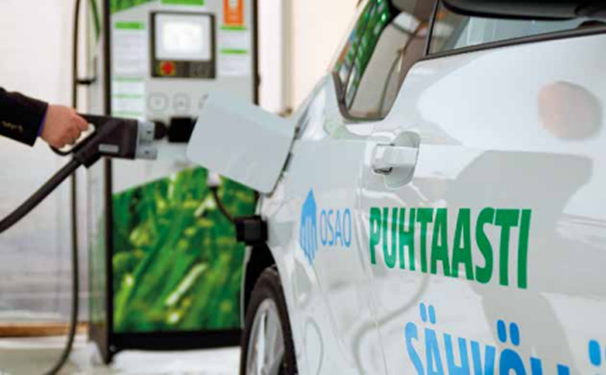The Auto2020 project is equipping students in Finland with the skills to meet the needs of the rapidly changing automotive industry. A learning and innovation centre was set up at the Educational Consortium OSAO, a vocational college, to provide training in the maintenance and repair of low- and emission-free vehicles. At the same time, the project has had other benefits, including a better quality of teaching and encouraging more women to work in the automotive industry.
- 29 October 2021
‘The Auto2020 project established a modern training centre that is preparing students of OSAO for work in the zero-emission transport industry. Every year, more than 100 new students and several companies benefit from this learning environment.’
An eco-friendly and modern learning environment was built at OSAO’s vehicle technology training division in Haukipudas, Finland. It was equipped with a chargeable battery and hybrid vehicle, welding and car-painting simulators, test equipment, and other tools and software. Students first began to use these in 2016.
As of November 2021, the vehicle technology division has 475 students and 28 teachers. About 110 have graduated each year since 2017, all having used some parts of the learning environment built in the project. Another 35 students studying for a further vocational qualification or specialist vocational qualification use the learning environments each year.
The college received the award for the best automotive education institution of 2017 for its work on modernising the learning environment and its collaboration with companies on the project.
Working with local SMEs
Initially, project participants attended fairs, meetings and visited companies to better understand the labour market needs that OSAO could meet, such as installation and maintenance of batteries and electronic systems in hybrid vehicles.
The project team sought the advice of automotive body and engine repair SMEs and vehicle importers. With their input, specifications were designed for the systems and equipment to be purchased.
For example, training sets were acquired to teach students how to install electrical wiring in hybrid cars. A car fitted with the latest technology, along with testing and calibration systems, were also purchased. The latter are used for teaching and maintenance purposes.
Thirdly, the new learning environments were built and in-house staff training was organised.
Enhancing learning and skills
The project has boosted the reputation of the vehicle technology department at OSAO as a modern learning and innovation centre, which is also used by SMEs.
Implementation of the project and the investment in the learning environment has led to improvements in the overall quality of teaching. More attention was paid to gender issues and students with special needs. Girls and women were – and still are – encouraged to pursue careers in the vehicle industry.
With the help of role models and changes to the pedagogy, five years after project implementation, 20 % of the course applicants are women.
OSAO is one of the biggest vocational colleges in Finland with eight units in six municipalities in the Oulu region. The Haukipudas unit has about 900 students and 100 staff. In addition to vehicle technology, it provides qualifications and training in surface-treatment technology, construction, restaurant and catering services, electrical and automation engineering, industrial arts, and textiles and fashion.
Total investment and EU funding
Total investment for the project “Auto2020 - Constructing a modern learning environment for vehicle technology” is EUR 563 880, with the EU’s European Regional Development Fund contributing EUR 394 716 through the “Sustainable Growth and Jobs” Operational Programme for the 2014-2020 programming period. The investment falls under the priority “investment in education to ensure the availability of a skilled workforce”.

